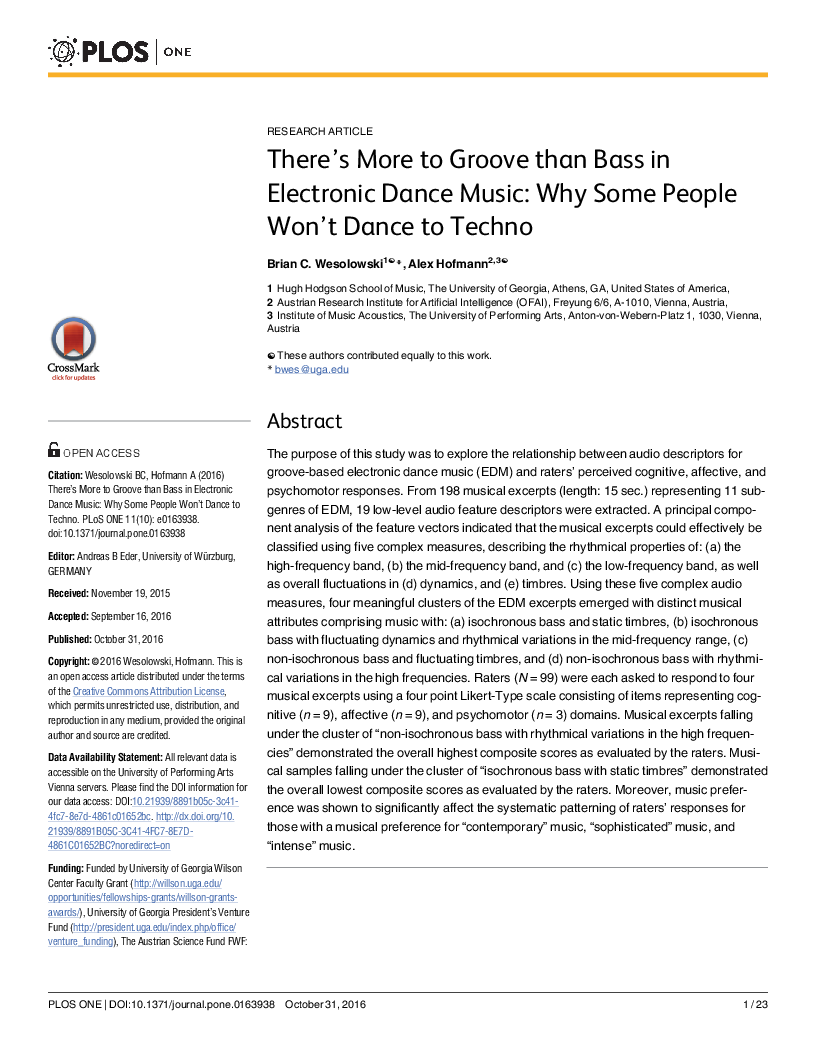
There’s More to Groove than Bass in Electronic Dance Music
Why Some People Won’t Dance to Techno
50dc18b5-acd8-446d-8257-23baf4d24813
Abstract (English)
The purpose of this study was to explore the relationship between audio descriptors for groove-based electronic dance music (EDM) and raters’ perceived cognitive, affective, and psychomotor responses. From 198 musical excerpts (length: 15 sec.) representing 11 subgenres of EDM, 19 low-level audio feature descriptors were extracted. A principal component analysis of the feature vectors indicated that the musical excerpts could effectively be classified using five complex measures, describing the rhythmical properties of: (a) the high-frequency band, (b) the mid-frequency band, and (c) the low-frequency band, as well as overall fluctuations in (d) dynamics, and (e) timbres. Using these five complex audio measures, four meaningful clusters of the EDM excerpts emerged with distinct musical attributes comprising music with: (a) isochronous bass and static timbres, (b) isochronous bass with fluctuating dynamics and rhythmical variations in the mid-frequency range, (c) non-isochronous bass and fluctuating timbres, and (d) non-isochronous bass with rhythmical variations in the high frequencies. Raters (N = 99) were each asked to respond to four musical excerpts using a four point Likert-Type scale consisting of items representing cognitive (n = 9), affective (n = 9), and psychomotor (n = 3) domains. Musical excerpts falling under the cluster of “non-isochronous bass with rhythmical variations in the high frequencies” demonstrated the overall highest composite scores as evaluated by the raters. Musical samples falling under the cluster of “isochronous bass with static timbres” demonstrated the overall lowest composite scores as evaluated by the raters. Moreover, music preference was shown to significantly affect the systematic patterning of raters’ responses for those with a musical preference for “contemporary” music, “sophisticated” music, and “intense” music.
 (in German)
(in German)





